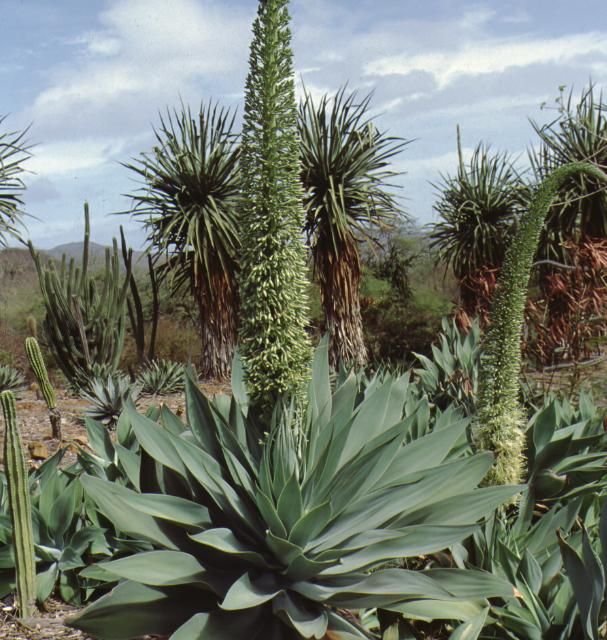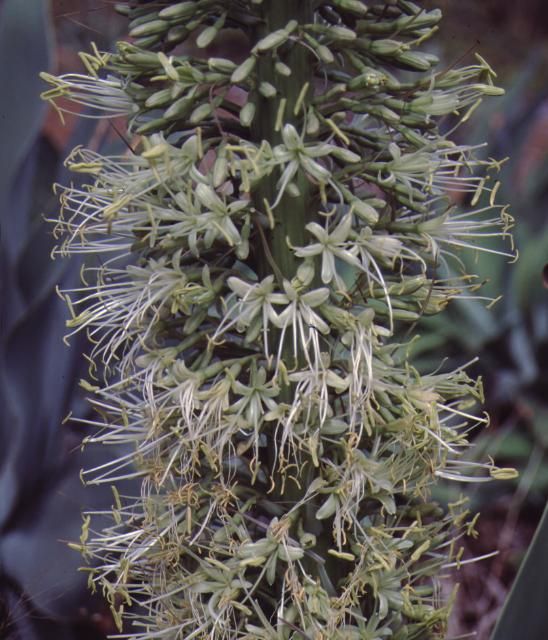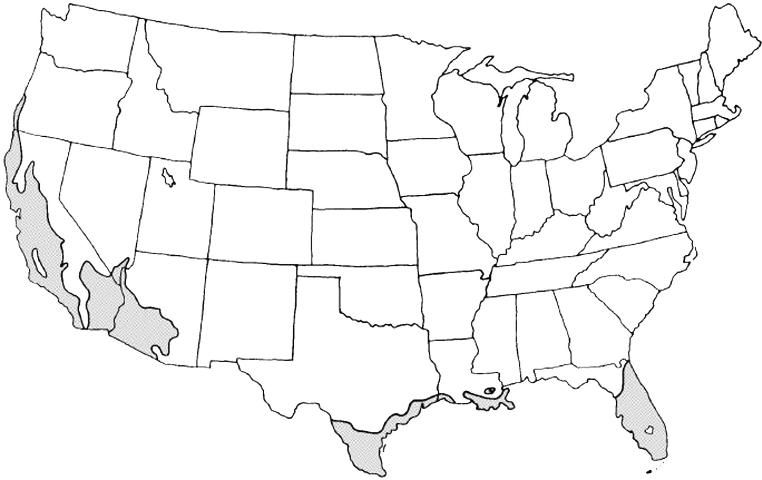Introduction
More common in California landscapes than Florida, spineless century plant is more suited for smaller landscapes due to its smaller stature than the century plant (Figure 1). Foliage is a soft, light blueish-green and does not terminate in a spine. The emerging group of leaves forms an attractive cone shape in the center of the plant. It can be included in gardens frequented by children, whereas the spines on the century plant can be hazardous with youngsters nearby.

Credit: UF/IFAS

Credit: Edward F. Gilman, UF/IFAS
General Information
Scientific name: Agave attenuata
Pronunciation: uh-GAW-vee at-ten-yoo-AY-tuh
Common name(s): spineless century plant
Family: Agavaceae
Plant type: shrub
USDA hardiness zones: 9 through 11 (Figure 3)
Planting month for zone 9: year-round
Planting month for zone 10 and 11: year-round
Origin: not native to North America
Invasive potential: not known to be invasive
Uses: border; accent; mass planting
Availability: somewhat available, may have to go out of the region to find the plant

Description
Height: 2 to 3 feet
Spread: 3 to 4 feet
Plant habit: round
Plant density: open
Growth rate: slow
Texture: coarse
Foliage
Leaf arrangement: alternate
Leaf type: simple
Leaf margin: terminal spine
Leaf shape: lanceolate
Leaf venation: none, or difficult to see
Leaf type and persistence: evergreen
Leaf blade length: 18 to 36 inches
Leaf color: blue or blue-green
Fall color: no fall color change
Fall characteristic: not showy
Flower
Flower color: white
Flower characteristic: flowers periodically throughout the year
Fruit
Fruit shape: oval
Fruit length: 1 to 3 inches
Fruit cover: dry or hard
Fruit color: brown
Fruit characteristic: persists on the plant
Trunk and Branches
Trunk/bark/branches: not particularly showy; usually with one stem/trunk
Current year stem/twig color: not applicable
Current year stem/twig thickness: not applicable
Culture
Light requirement: plant grows in part shade/part sun
Soil tolerances: alkaline; clay; sand; acidic; loam
Drought tolerance: high
Soil salt tolerance: unknown
Plant spacing: 36 to 60 inches
Other
Roots: usually not a problem
Winter interest: no special winter interest
Outstanding plant: not particularly outstanding
Pest resistance: no serious pests are normally seen on the plant
Use and Management
Spineless century plant is a hardy survivor, tolerating heat, drought, and moderate salt exposure. Little irrigation is needed once the plant is established. It grows best in full sun but can adapt to some shade. After 10 years or more (though not a century), a lofty flower spike is produced, with terminal panicles of pale yellow to white blooms. The stem producing the flower dies soon after. Plants can be grouped together in a mass or planted alone as a specimen in a rock garden. Larger commercial landscapes have room for multiple mass plantings which can create a dramatic impact.
Propagation is by detaching the well-rooted suckers appearing at the base, or by uprooting germinating seedlings near the plant.
Design Considerations
The bold form and coarse texture of the spineless century plant make it perfect as a specimen plant in highly visible spaces in the landscape. Use with companion plants that are softer, with small foliage and mounding or spreading forms to contrast and highlight the stiff, upright form of the leaves. Pairing with plants that have more texture in the foliage will also contrast with the smooth, stiff leaves. To highlight the soft blueish-green in the leaves use plants with dark green foliage or plants with small to medium flowers with cool, bright colors, such as purples, blues, and deep corals. Another option is to complement the soft green with soft yellow or white wispy grasses. Large masses of low-growing companion plants around the base or in front of the century plant will create a nice setting to show off the form.
Pests and Diseases
Few problems appear to affect most specimens.